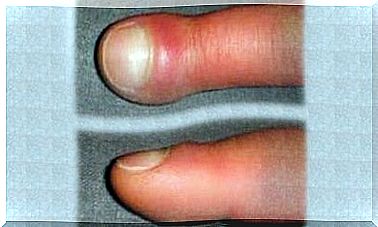General Adaptation Syndrome: This Is How We React To Stress
When we face a stressful situation, our body reacts in a very concrete way. The danger to our physical and psychological health comes when these stressful elements become a constant in our lives.

General adaptation syndrome explains how our body reacts to a stressful situation. This theory, articulated by physiologist Hans Selye in 1936, shows us all the physiological processes we experience when something disturbs us, overtakes us, and overrides our ability to control.
Nervousness, upset stomach, worry, accelerating heart rate, headache… We have all experienced these symptoms of stress. Nevertheless, even though we know its consequences, the triggers escape us and, above all, we do not understand why these phenomena occur. So even though stress is a normal physiological response, we experience this reality with great pain.
Let’s face it: we live in a society where not only are conditions like stress and anxiety disorders normalized, but also where the person who does not reach this level of activation is considered to be a person who does not put enough effort into their work or daily life. Accepting and integrating these views has serious health consequences. Let us therefore analyze how this process of adaptation takes place in the face of stressful situations.
General adaptation syndrome: definition and phases
Imagine, for example, that we start a new job. As the weeks go by, we start to see that our workload is far too high and that the atmosphere in the office, in addition to being oppressive, takes away all our motivation. The psychological wear and tear is evident.
However, what we feel during this period perfectly integrates the essence of the theory stated by Hans Selye. General adaptation syndrome describes the process of this natural human response to stressful situations.
This experience can be adaptive and normal when, in the end, we manage to adjust to these demanding stimuli in our environment. However, when these conditions go beyond our ability to control and end up lasting, negative effects emerge.
It is also worth emphasizing one important thing: these reactions are universal. Dr. Selye performed a series of experiments on mice at McGill University in Montreal, subjecting them to stressful situations to study their behaviors.
The effects were always the same. After that, he switched from animal models to human models only to find that indeed, the general adaptation syndrome always occurs in three phases. We are now going to study them.

1. Alarm or shock phase
Selye’s model is still valid today. Studies like the one carried out at the University of West Virginia in the United States have tried to find flaws and weaknesses in this approach, but its bases are still interesting.
Often, to verify its effectiveness, it is applied in the field of sport, a field that allows us to illustrate these phases very well. The first of these is when we face an extremely stressful situation for the first time.
For example, playing against an opponent in tennis, football or karate. We can also take the example of a new job. Our body reacts in the following way:
- We experience a tachycardia and a feeling of alarm.
- The most common is to feel paralyzed at first, not knowing how to react.
- Faced with this threatening stimulus, the adrenal system begins to release cortisol, the stress hormone.
If the person manages to manage this first phase and gain control, the general adaptation syndrome ends here. If not, we move on to the next phase.
2. Resistance phase
When the stressful element remains in our environment even though we have not adapted to it, the resistance phase begins. During this stage, the level of activation is no longer so high but the physical discomforts are still present, to a greater or lesser extent. Let’s dig a little deeper into this idea.
- Resistance is defined as this sustained inability to face, accept or react to what overwhelms us, worries us or alarms us. The anguish persists; and while it is true that we no longer experience so many tachycardias and that we are no longer trapped in this feeling of constant alertness and hypersensitivity, the uncertainty and discomfort continues because we do not adapt.
- Cortisol continues to be released in our body and this can cause us to experience fatigue, mood swings, irritability and trouble concentrating.
If we do not adapt, during this stage, to a concrete situation and its stressful elements, we will arrive at a more problematic phase.
3. The general adaptation syndrome and the exhaustion phase
As Dr. Carmen Ocaña Méndez explains in her work on general adaptation syndrome, a large part of the population today lives in the phase of exhaustion.
In other words, we (many of us) coexist with persistent stress because we don’t get used to or fail to cope with the stressful stimuli around us.
- When we spend months in a state of persistent stress, our physical and psychological resources are depleted.
- The risk of developing certain diseases increases. The most usual is to start noticing hypertension, digestive alterations, insomnia, musculoskeletal pain, headaches, dizziness, among others.
- We cannot forget one point either: stress that becomes chronic leads to anxiety disorders.

The importance of learning to manage stress
The general adaptation syndrome shows us the importance of managing stress quickly to avoid reaching the exhaustion phase. Unmanaged stress becomes chronic, and with it we see discomfort and associated illnesses.
We must keep this in mind: managing these states is possible, but above all necessary. We all have the resources to do this (Lazarus, 1980). Here are some strategies:
- Clarify stressful stimuli.
- Develop solutions to problems. To prevent this challenge from getting bigger and out of hand as the days go by.
- Act on his emotions. We must try to maintain control over them, and not the other way around.
- Set new goals every day, which will allow us to resolve this situation and increase our well-being.
- Lead a healthy lifestyle, practice relaxation and deep breathing.
Finally, and this is an equally important point, we must learn to ask for help when we need it. The support of our loved ones and the intervention of specialized professionals will prevent us from reaching these tiring limits.









